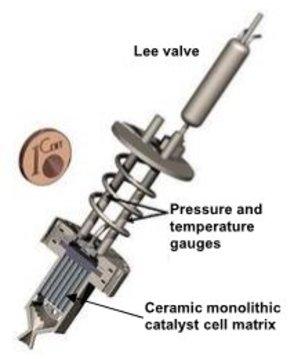Results 1 to 1 of 1
-
06-29-2015, 01:41 PM #1
3D Printed Ceramic Thruster is created
Following successful "hot fire" trials last month of a 3D printed platinum combustion chamber and nozzle, the European Space Agency has now seen further success in hot fire testing thanks to research it funded at the University of Birmingham. Researchers have produced, via an additive manufacturing and coating system that took years of development, created the world's first 3D printed ceramic catalyst bed for use in rocket engine thrusters. The catalyst beds tested to prove they were "extremely reactive" and work in conjunction with a hydrogen peroxide monopropellant, providing an environmentally friendly approach. The created components feature a resolution of less than 100 microns and a high surface area to unit mass ratio. Check out more details in the full story: http://3dprint.com/77347/3d-printed-ceramic-thruster/
Below is a schematic from the ESA with a cutaway showing advanced thrusters internal design and location, above nozzle, of the monolithic catalyst cell matrix:









 Reply With Quote
Reply With Quote



Extruder not feeding during print,...
Yesterday, 01:59 AM in Tips, Tricks and Tech Help